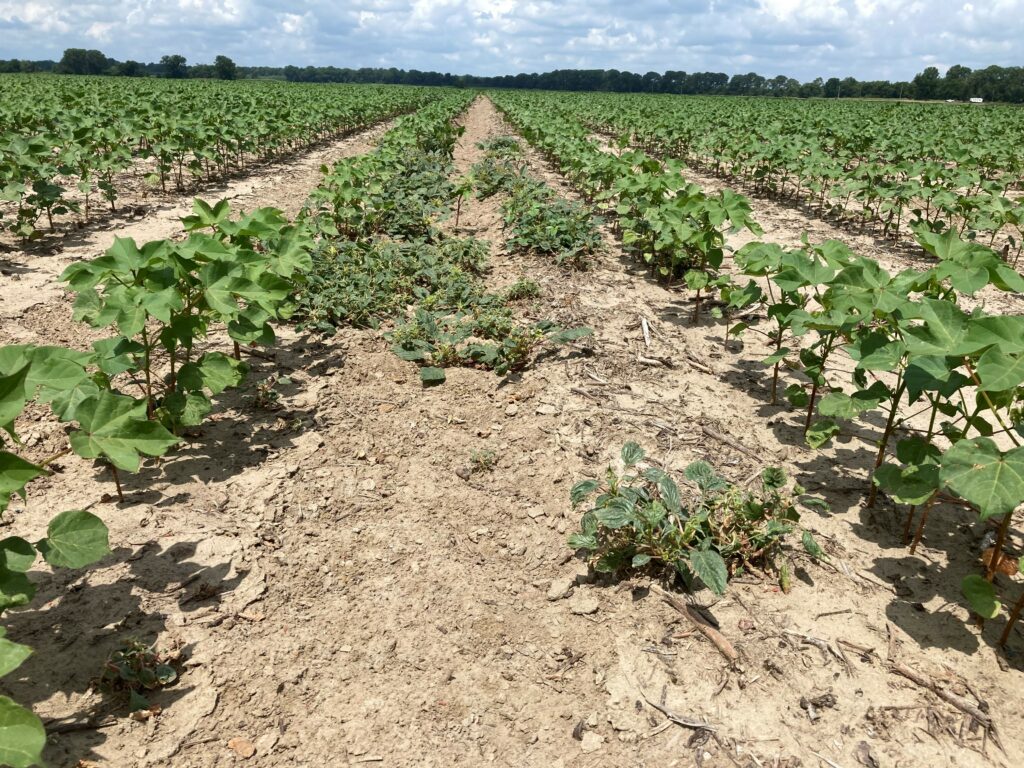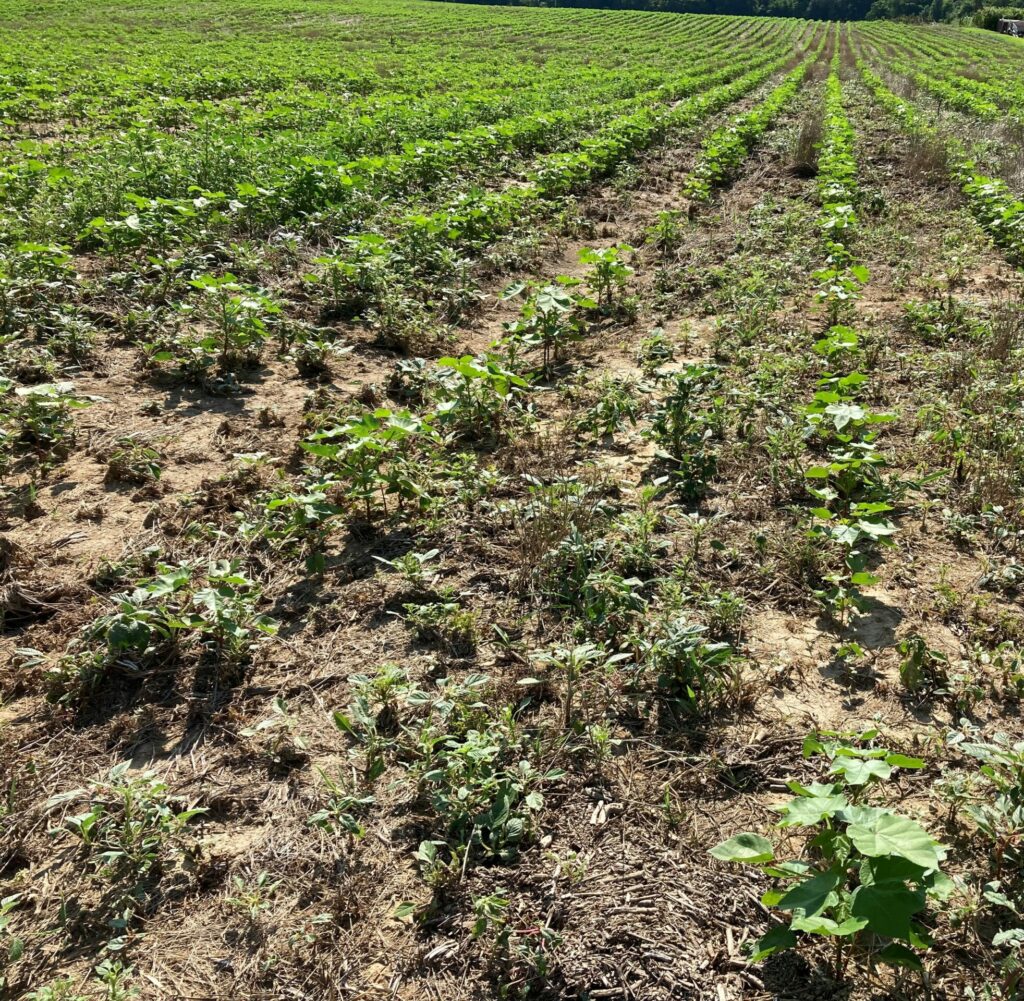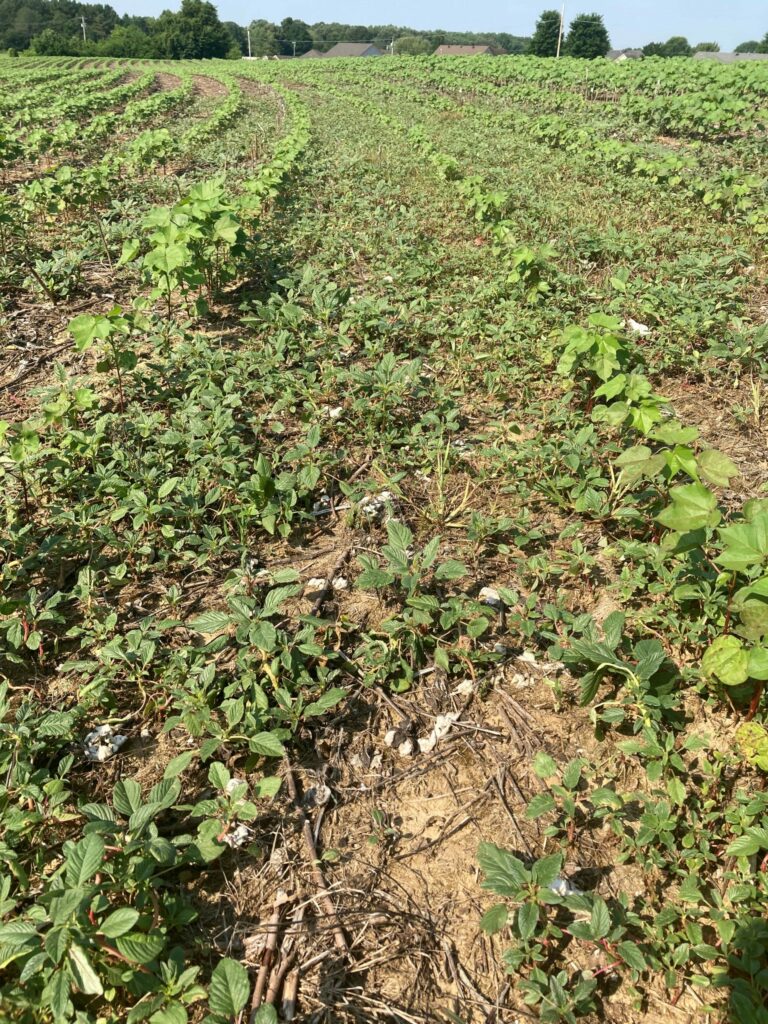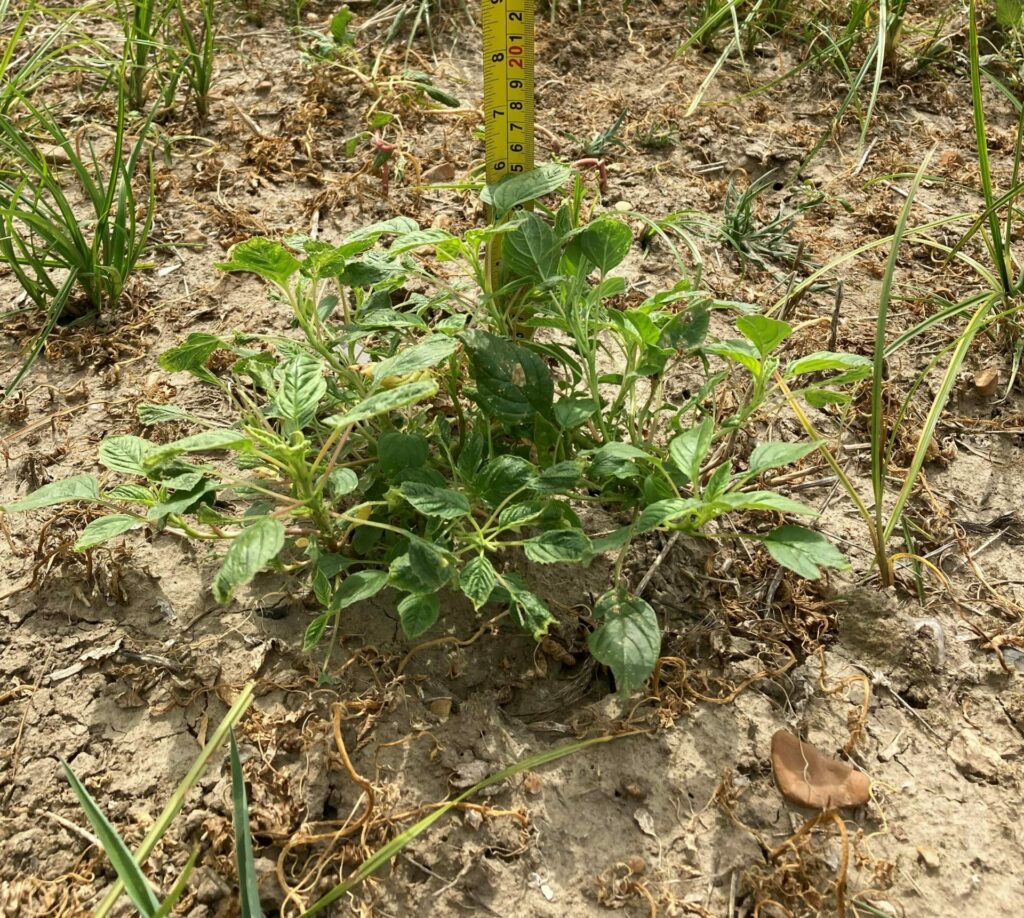
For the past week we have been getting reports along with a good many pictures of Palmer amaranth escaping dicamba application/s from retailers and consultants scouting fields (Picture 1 and 2). As one retailer so aptly described it today “there are spots in fields where the lack of Palmer control is frightening”.

We have gotten a couple reports on Palmer amaranth escaping Enlist One as well (Picture 3). The Palmer amaranth that is resistant to dicamba and 2,4-D will grow sideways for a couple of weeks after application. As such they cannot readily be seen from the truck but by putting boots in the field. So, it is really not a surprise that the majority of these reports are from folks who walk these fields regularly.

These reports are consistent with our field research this year. We have conducted extensive research at a number of sites this summer where Palmer amaranth was reported to survive multiple dicamba applications in 2020. This research was designed to determine if the Palmer escapes from dicamba applications in 2020 were really due to dicamba resistance or some other factor. Then if so, to quantify the level of dicamba resistance. We also tested to see how these suspect Palmer amaranth populations responded to 2,4-D.
In short, the research at these locations did indeed find significant populations of Palmer amaranth that were resistant to dicamba. The average Palmer amaranth control with 0.5 lb of dicamba (22 ozs XtendiMax, 12.8 ozs Engenia) applied to 2 to 4” Palmer amaranth was 46%. This is well below the 85 to 95% Palmer control typically seen in our research just four years ago. Even with a 2x rate (1.0 lb of dicamba) Palmer amaranth control was no better than 63%. These results are very similar to what is being reported by crop consultants and retailers.

What was also notable from our research is that with even some very high rates of dicamba (88 and 176 ozs/A of XtendiMax) there were a few Palmer amaranth survivors 21 days after application (Picture 3). This was different from some preliminary research last year when we saw complete Palmer amaranth control with high rates on suspected dicamba-resistant populations.
We have also tested these Palmer amaranth populations for how they respond to 2,4-D (Enlist One). Unfortunately, control with the standard 32 oz/A rate of Enlist One provided no better Palmer control than the 0.5 lb rate of dicamba (40 to 50%). Moreover, like with dicamba, we saw Palmer amaranth survivors with some higher rates of Enlist One (128 ozs/A).
In summary, judging from our research, field visits, and reports, dicamba and Enlist One can no longer be thought of as “Palmer amaranth herbicides” in some fields. They need Liberty to back them up either in a tankmix as in the case with Enlist One or as a sequential application of Liberty shortly after dicamba or Enlist One. Unfortunately, I am hearing some cannot get Liberty for these clean up treatments. This shortage will likely accelerate the Palmer amaranth resistance problem.

